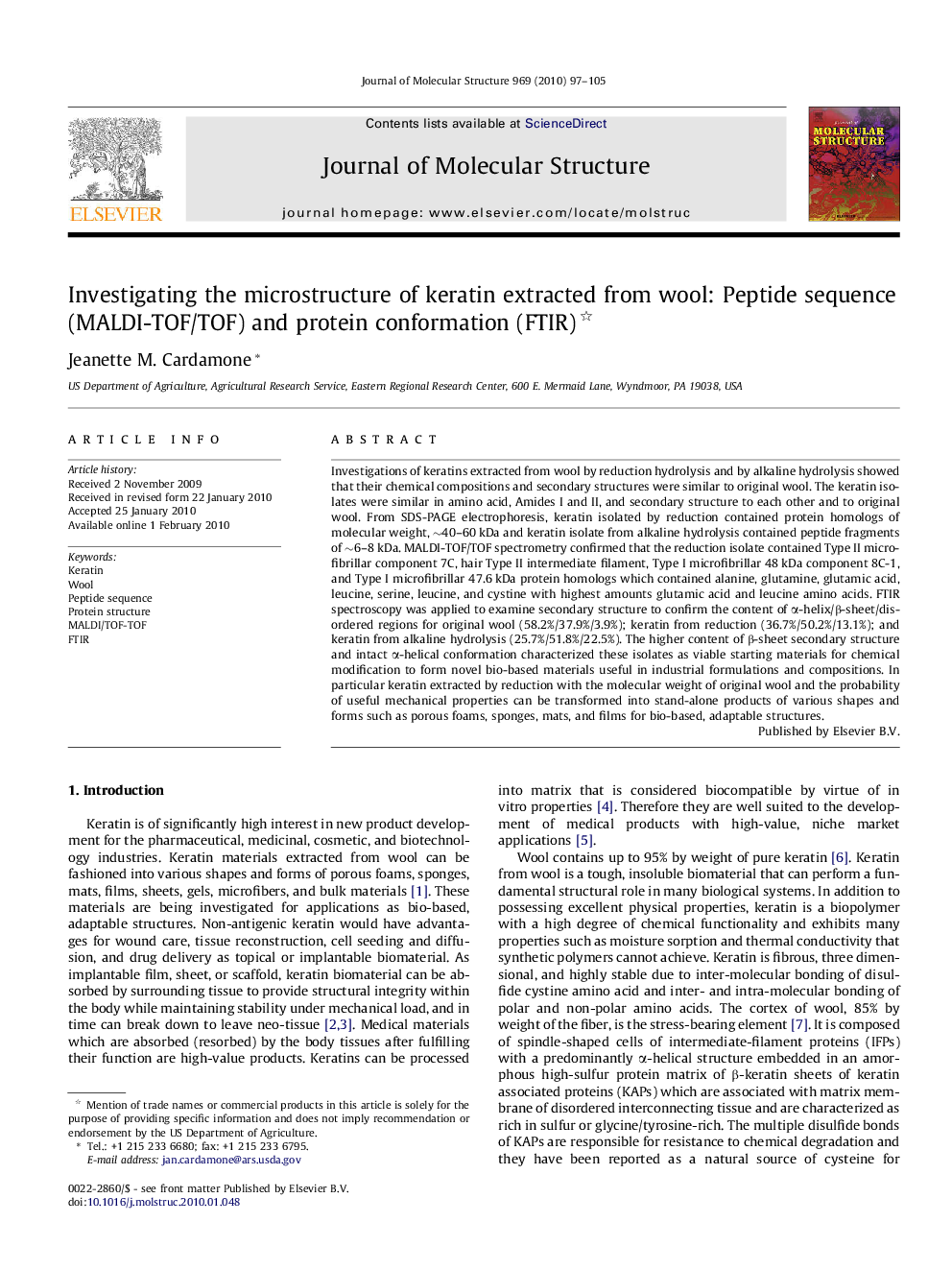| کد مقاله | کد نشریه | سال انتشار | مقاله انگلیسی | نسخه تمام متن |
|---|---|---|---|---|
| 1406261 | 1501845 | 2010 | 9 صفحه PDF | دانلود رایگان |

Investigations of keratins extracted from wool by reduction hydrolysis and by alkaline hydrolysis showed that their chemical compositions and secondary structures were similar to original wool. The keratin isolates were similar in amino acid, Amides I and II, and secondary structure to each other and to original wool. From SDS-PAGE electrophoresis, keratin isolated by reduction contained protein homologs of molecular weight, ∼40–60 kDa and keratin isolate from alkaline hydrolysis contained peptide fragments of ∼6–8 kDa. MALDI-TOF/TOF spectrometry confirmed that the reduction isolate contained Type II microfibrillar component 7C, hair Type II intermediate filament, Type I microfibrillar 48 kDa component 8C-1, and Type I microfibrillar 47.6 kDa protein homologs which contained alanine, glutamine, glutamic acid, leucine, serine, leucine, and cystine with highest amounts glutamic acid and leucine amino acids. FTIR spectroscopy was applied to examine secondary structure to confirm the content of α-helix/β-sheet/disordered regions for original wool (58.2%/37.9%/3.9%); keratin from reduction (36.7%/50.2%/13.1%); and keratin from alkaline hydrolysis (25.7%/51.8%/22.5%). The higher content of β-sheet secondary structure and intact α-helical conformation characterized these isolates as viable starting materials for chemical modification to form novel bio-based materials useful in industrial formulations and compositions. In particular keratin extracted by reduction with the molecular weight of original wool and the probability of useful mechanical properties can be transformed into stand-alone products of various shapes and forms such as porous foams, sponges, mats, and films for bio-based, adaptable structures.
Journal: Journal of Molecular Structure - Volume 969, Issues 1–3, 22 April 2010, Pages 97–105